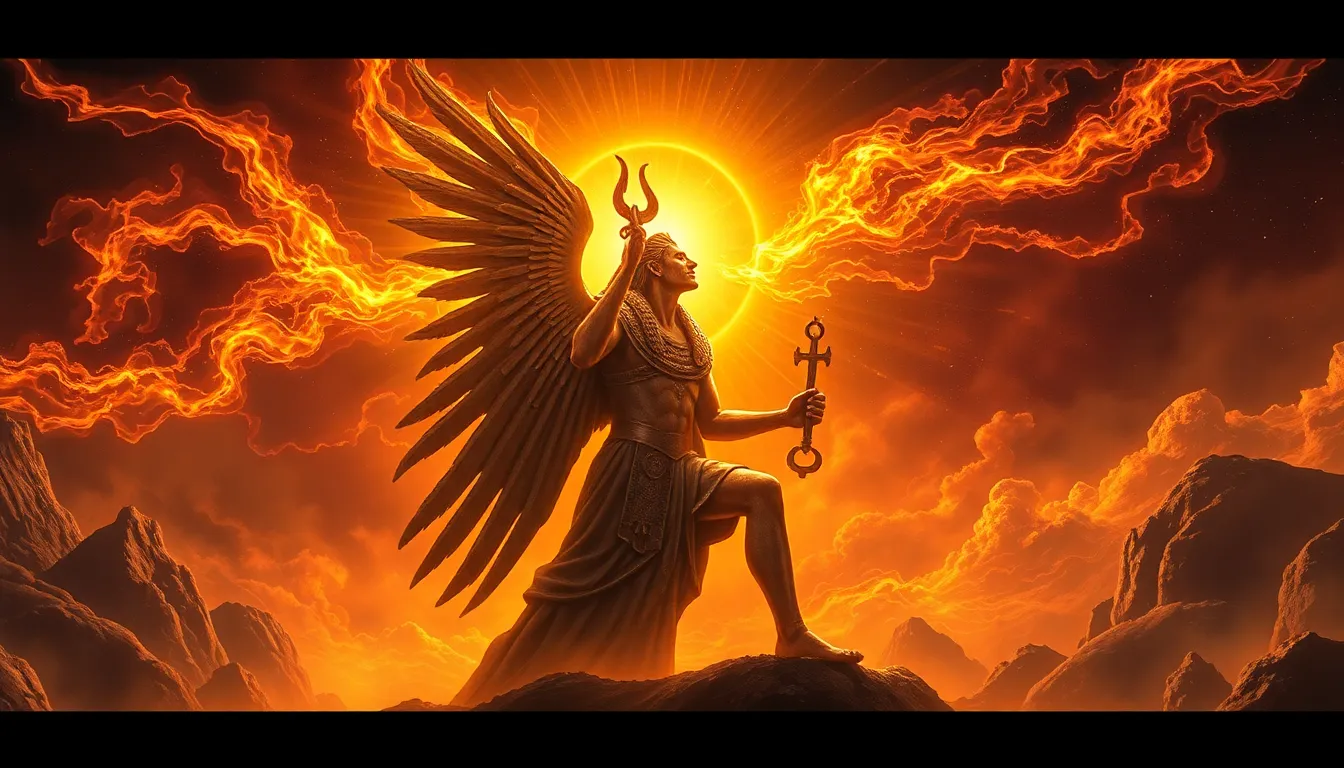The Solar Myth of the Dying and Rising God
I. Introduction
The Solar Myth of the Dying and Rising God is a profound narrative that encapsulates the cyclical nature of life, death, and rebirth, mirroring the solar cycles observed in nature. This archetype represents deities who undergo death and resurrection, symbolizing the eternal renewal of life.
Across various cultures, the Dying and Rising God serves as a pivotal motif, reflecting humanity’s deep-seated beliefs about mortality and the divine. These myths often illustrate how the changing seasons affect agricultural cycles, influencing religious practices and societal norms.
II. Historical Context
The origins of the Dying and Rising God myth can be traced back to ancient civilizations that sought to explain the natural phenomena associated with the sun. This archetype is prevalent in many cultures, including the Egyptians, Mesopotamians, and Greeks, each of which integrated the idea into their religious frameworks.
- Egyptian Civilization: The worship of gods like Osiris, who embodies resurrection and fertility.
- Mesopotamian Beliefs: Deities such as Tammuz, who is associated with seasonal death and rebirth.
- Greek Mythology: Figures such as Dionysus and Persephone, whose stories reflect the cycle of seasons.
The influence of the solar cycle on these religious beliefs is significant, as it shaped rituals and celebrations that correspond to the agricultural calendar, reinforcing the connection between the divine and the natural world.
III. Key Characteristics of the Dying and Rising God
The Dying and Rising God archetype shares several key characteristics across different cultures:
- Death and Resurrection: A prominent theme where the god dies and is subsequently resurrected, symbolizing the cyclical nature of life.
- Seasonal Cycles: The narrative often aligns with the changing seasons, particularly the transition from winter to spring.
- Sacrifice: Many myths involve the theme of sacrifice, where the god must endure suffering for the sake of renewal.
The symbolism of death and rebirth is intricately tied to solar patterns, with the sun representing life-giving energy that undergoes cycles of disappearance and reappearance.
IV. Case Studies of Dying and Rising Gods
Several deities exemplify the Dying and Rising God archetype, each with unique narratives and significance:
A. Osiris: The Egyptian God of the Afterlife
Osiris is one of the most well-known representations of this myth. He is associated with agriculture and the afterlife, dying at the hands of his brother Set and being resurrected by his wife, Isis. His story symbolizes the fertility of the land and the promise of life after death.
B. Attis: The Phrygian God of Vegetation
Attis is another significant figure, representing the cycle of death and rebirth in nature. He dies and is resurrected each spring, mirroring the agricultural cycle and the renewal of life.
C. Jesus Christ: Comparison with Earlier Myths
The story of Jesus Christ presents a notable parallel to earlier myths, where his crucifixion and resurrection emphasize themes of sacrifice and redemption. This narrative has influenced countless aspects of Western culture and religion.
D. Other Notable Examples
- Dionysus: The Greek god of wine and fertility, whose death and resurrection are celebrated during festivals.
- Persephone: The goddess of spring, whose descent into the underworld and return signifies the seasonal cycle.
V. Cultural Impact and Legacy
The myth of the Dying and Rising God has left an indelible mark on storytelling, literature, and the arts. It has shaped narratives across cultures, providing a framework for exploring themes of mortality, renewal, and the human experience.
- Storytelling and Literature: The archetype has influenced countless works, from ancient texts to modern novels.
- Art and Architecture: Depictions of these deities can be found in various artistic expressions, including sculpture and painting.
- Modern Religious Practices: Elements of these ancient myths continue to resonate in contemporary religious beliefs and practices.
VI. Psychological and Sociological Perspectives
The Dying and Rising God myth can also be examined through psychological and sociological lenses. Carl Jung’s concept of archetypes and the collective unconscious suggests that these narratives resonate deeply with human psychology.
- Role in Human Psychology: These myths provide coping mechanisms for understanding life, death, and transformation.
- Societal Functions: They serve to unify communities through shared beliefs and cultural practices, both in ancient and modern societies.
VII. Critiques and Controversies
Despite the rich narratives surrounding the Dying and Rising God, there are debates regarding their historical accuracy and interpretations:
- Historical Accuracy: Scholars often debate the origins and influences of these myths, questioning their factual basis.
- Religious Criticism: Different religious perspectives may critique the validity of these narratives from their doctrinal viewpoints.
- Modern Misinterpretations: Contemporary interpretations can sometimes distort the original meanings and contexts of these ancient myths.
VIII. Conclusion
The Solar Myth of the Dying and Rising God holds significant importance across cultures, encapsulating humanity’s understanding of life, death, and renewal. Its themes resonate deeply within contemporary society, offering insights into our shared experiences and beliefs.
As we continue to explore these ancient myths, we gain a greater appreciation for their relevance and the timeless questions they address about existence, transformation, and the cycles of life.
Further exploration and understanding of these narratives can enrich our comprehension of human culture and the universal truths that bind us together.




